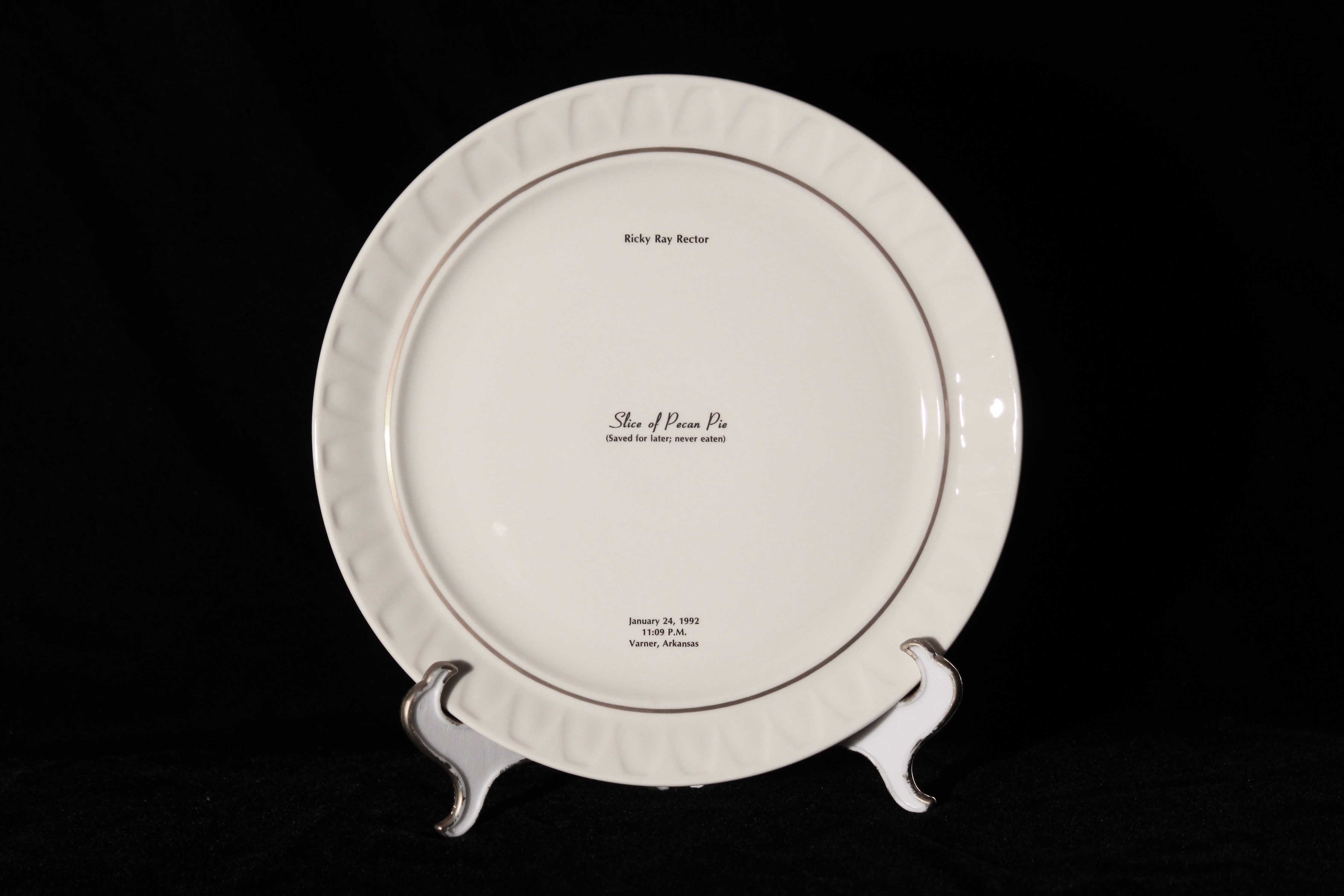The Last Meal consists of bone china dinner plates, displaying elegant text imprinted in the area which would ordinarily contain food. The subject is crime and punishment, with a particular focus on capital punishment and its surrounding publicity.
At the top of each plate appears a condemned person’s name. Further down and centered within the plate, is a description of their last supper, the meal which they requested and which they were served just prior to their execution. Below that appears the time, date and place of their execution.
Some of the requests are elaborate, rich dinners of salmon or sirloin steak; others are as simple as hot dogs. At first glance, the foods listed on the plates seem innocent enough, until one realizes the finality of the meal and the destiny of these individuals. The viewer can become unsettled with their own reactions, once they realize the source of these requests, for not only does it undermine our expectations related to the pleasure surrounding food and the idea of personal choice, but it also reveals our own voyeuristic nature and our desire to know more, to know all. Why is this information recorded by the State for posterity and provided to the public on the evening news? Why has this person who has been stripped of all freedom of choice, now in his final hour, been afforded an identity? We wonder, through his/her selection of certain foods, what kind of person this was, do their choices reveal something about their background, is there some connection between their crime and this meal, is there a message behind their requested foods?
The information provided in the Last Meal was sourced and compiled from government records and news reports. A confirmation of the voyeuristic nature of the American public, the Last Meal reveals our fascination with the nitty-gritty details regarding murder and the spectacle surrounding state executions. But this collection of last wishes does more than simply cater to popular culture’s lurid curiosities. There is a powerful statement in Arthur Gary Bishop choosing instead to fast, or Edward Fitzgerald’s insistence that the items of his meal not be disclosed. But perhaps most telling are the eating habits of Ricky Ray Rector, who chose to “save” his dessert for later, perhaps not understanding that he would not be returning to his cell that evening, lending support to the theory that this brain-damaged man was unfit to stand trial.
This statement is derived in part from the exhibition essay “The Menu”, by Brian Hannon, Director, Center for Book Arts, NY 1995. The Last Meal is a companion to the artist’s book, The Menu, published in 1995.

